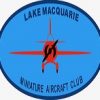Learning Objectives
- To be confident in taking and passing the Bronze Wings Test
Bronze Wings Rehearsal
In this lesson your instructor will take you through the full Bronze Wings test to prepare you for the real thing!
The following is reproduced from the test schedule issued by the Model Aeronautical Association of Australia:
1. DEXTERITY
Pilot must be able to locate all the transmitter controls quickly without fumbling.
2. THEORY
Pilot must be able to name all major components of the aircraft and define functions including effect of controls and have a thorough knowledge of safety rules and regulations.
3. AIRFRAME & PRE-FLIGHT CHECK
Check engine mounting, plumbing, centre of gravity location, throttle setting, under-carriage secure, and signs of structural or covering problems that could affect flight e.g. Controls neutral and control throws correct, presence of warps which could affect trim, state of battery and range check.
4. TAKE OFF
Use gradual application of power while keeping the aircraft straight, and using a little elevator to lift off, then making a gentle climb out with wings level until safe altitude is reached.
5. TRIMMING
Pilot to show ability to trim aircraft in flight. Displacement and re-trimming both the primary roll control and elevator should be demonstrated.
6. PROCEDURE TURNS – One in each direction.
The pilot’s ability to perform the following steps in the procedure turn will be monitored.
a. Level flight segments should be straight and level.
b. Aircraft should pass directly over the landing area.
c. Turns should be at a constant altitude.
d. Turns should be completed in order that upwind and downwind tracks are superimposed.
7. LANDING CIRCUITS
In both directions, as shown in the diagram in the M.A.A.A. Pilot Log Book, with all turns of 90 degrees. With high performance aircraft the power needs to be reduced much sooner than at the turn onto base leg. The upwind and downwind legs are parallel to the landing strip. The first three legs are maintained at a constant height and a gradual approach angle is started at the beginning of the base leg.
8. APPROACH & LANDING
With engine assisted landings (approximately 1/4 power or suitable power setting depending on the model set-up allowing the model to descend under power) control nose attitude and therefore airspeed with elevators and use the throttle to place the aircraft where you want it to be. The aircraft should be flown over the threshold at an altitude of about 1.5 metres, the throttle closed, and as the aircraft settles towards the ground the round-out or flare is initiated. The “hold-off” period is then commenced where the aircraft is gradually allowed to sink and settle on the ground in a slightly nose high attitude.
9. SIMULATED DEAD STICK LANDING
At a safe and high position the student will reduce the throttle to idle and perform a descending circuit to show his/her ability to safely glide the model without engine power to a position where a landing approach can be executed.
Your instructor will give you tips on how to approach each of these tasks and the best way to fly the manoeuvres to impress your examiner.
And that is it! You should now be ready to take your Bronze Wings and enjoy the freedom of flying your model whenever you like without having to ask an instructor to accompany you!
After you pass
Do not throw that trainer away too quickly. A trainer aircraft can be made to be more responsive, fly faster and perform aerobatics whilst still being forgiving of errors. Take some time to go over these lessons once again and practice the manoeuvres until you can do them perfectly.
Most importantly, do not be afraid to ask advice! Your instructor is an instructor because he has been flying for many years and has flown a lot of different models and knows a lot of advanced flying skills. He can go on to teach you to fly aerobatic manoeuvres and even prepare you for your GOLD WINGS!
Finally – please do not be tempted by that 2 meter wingspan pure-scale spitfire for your second model! You will not be able to fly it just yet!!!

